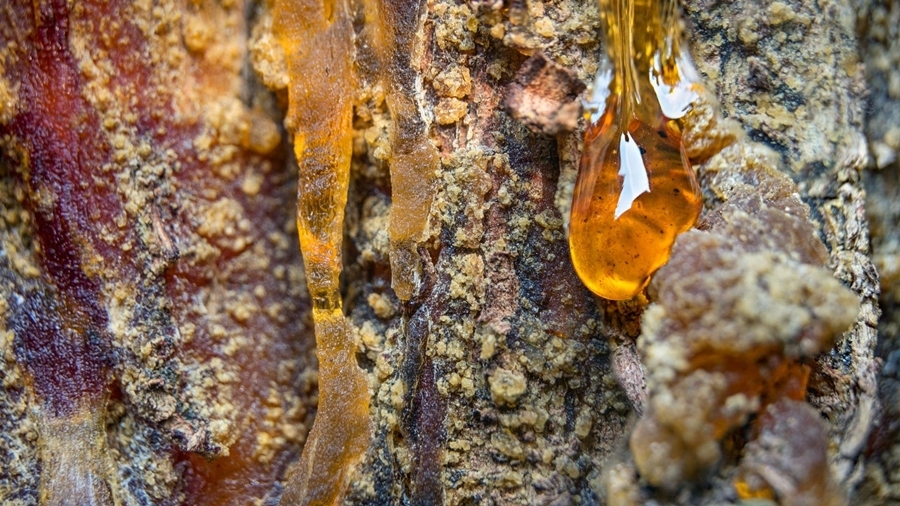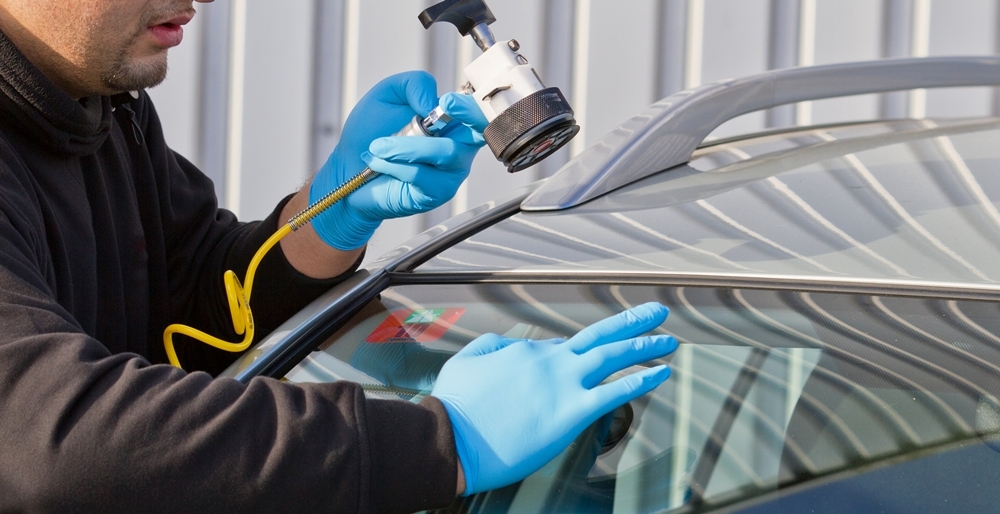Introduction: Why This Matters
Cracked or chipped windshields are more than cosmetic damage—they compromise your safety and may even be illegal. If you’re asking, can you drive with a cracked windshield, the short answer is: you really shouldn’t. Here’s why.
Also read: 3 Secrets to the Cheapest Windshield Replacement
Table of Contents
7 Alarming Reasons You Should Never Drive with a Cracked Windshield
Can You Drive with a Cracked Windshield? Here’s Why the Answer Is No
Cracked or chipped windshields are more than a cosmetic issue. Many drivers overlook them, asking, “can you drive with a cracked windshield” and assuming it’s no big deal. But the truth is, even a small crack can compromise your safety, affect your insurance, and get you into legal trouble.
Let’s break down why the answer to “can you drive with a cracked windshield” is a firm no—and what you should do instead.
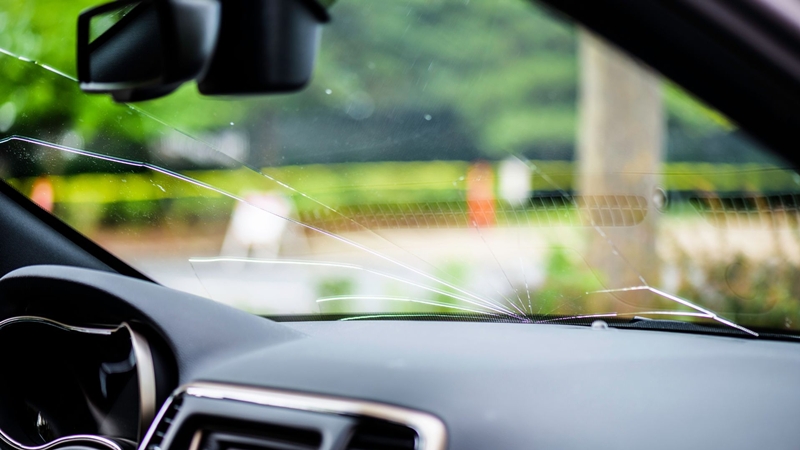
1. A Cracked Windshield Weakens Your Vehicle’s Structure
When people ask can you drive with a cracked windshield, they often don’t realize how important the windshield is to overall car safety. It supports up to 45% of your car’s roof strength during a rollover. If the glass is cracked, it may fail under pressure, putting everyone in danger.
Windshields also work with airbags to keep passengers safe. If a cracked windshield shatters on impact, the airbag may not deploy correctly, increasing injury risk.
2. Small Chips Turn Into Major Hazards Fast
Still wondering can you drive with a cracked windshield if the damage looks minor? Think again. Tiny chips can quickly grow due to road vibrations, temperature changes, or a hit from debris.
That minor flaw can become a full fracture overnight—turning a cheap repair into an expensive, urgent replacement.
3. Cracked Windshields Can Be Illegal
Laws vary, but almost every state prohibits driving with windshield damage that obstructs the driver’s view. If you’re pulled over, you could face a fine or points on your license. This makes the question can you drive with a cracked windshield not just about safety, but legality too.
4. Insurance Might Deny Your Claim
If you ignore the damage too long, your insurance may not cover the repair—or the replacement. Most policies cover small chips, but if they spread, you could be left footing the bill.
Before you ask can you drive with a cracked windshield and delay the fix, know that waiting could void your coverage.
5. It Could Increase Your Liability in an Accident
Driving with a damaged windshield could increase your liability in a crash. If investigators find the crack limited your visibility or contributed to injury, your insurer might reduce your payout.
This is another reason why can you drive with a cracked windshield is more than a casual question—it could impact your financial and legal future.
6. Visibility Drops, Even with Small Cracks
Even tiny cracks or chips can cause glare, blur your view, or distract your eyes—especially in sunlight or rain. When you’re asking can you drive with a cracked windshield, remember that compromised visibility is a top cause of accidents.
7. Quick Repairs Are Cheap—If You Act Early
If the chip is smaller than a quarter and not in your direct line of sight, a simple resin repair might be enough. But if the damage spreads, full replacement may be necessary.
So, instead of wondering can you drive with a cracked windshield, ask yourself: why wait and risk more damage when the fix is fast and affordable?
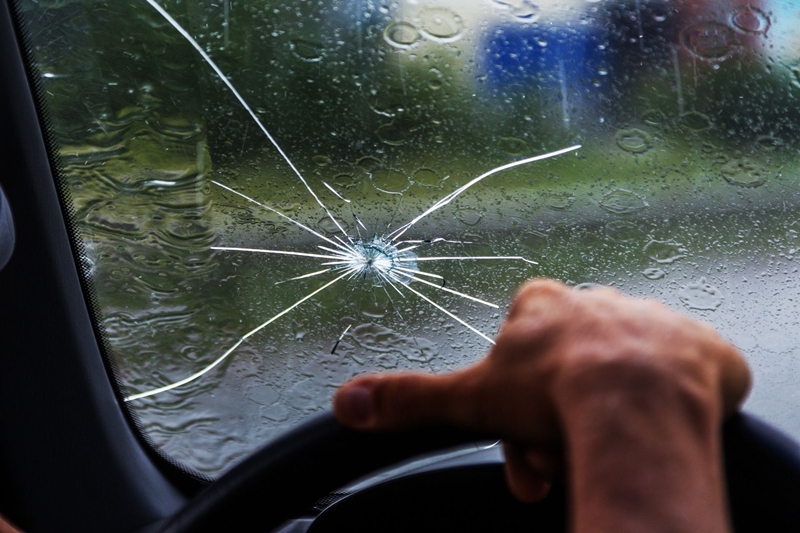
The Structural Risks of Driving with a Chipped Windshield
How Windshields Contribute to Vehicle Safety
Windshields are important for keeping you safe in your car, and they do a lot more than just stop bugs and dirt from hitting you in the face. They’re actually a big part of your car’s overall safety system. These days, windshields are designed to not only help you see clearly but also to make your car stronger in a crash.
The Role of Windshields in Crash Protection
One big job of a windshield is to help hold up the car’s roof if you get into a crash. If your car rolls over, a solid windshield can stop the roof from caving in, which is important because a collapsing roof can cause serious injuries or worse.
Studies show that windshields can provide up to 45% of the roof’s strength, so they’re key for keeping everyone inside safe. This is precisely why asking “can you drive with a cracked windshield” becomes crucial—the answer directly impacts your safety.
Windshields also team up with airbags. When you crash, airbags pop out fast to protect you, and the windshield helps by giving the airbag something to push against.
If your windshield is cracked or not installed right, it might not support the airbag properly, which could make it not work as well and increase the risk of injury.
Increased Risk of Complete Breakage
Small chips might seem harmless, but they can grow fast. A tiny crack can turn into a big one when the windshield is hit by a bump or jolt. The stress from hitting a pothole or sudden stop makes cracks spread quickly. Sometimes, a minor chip turns into a full-blown windshield shatter.
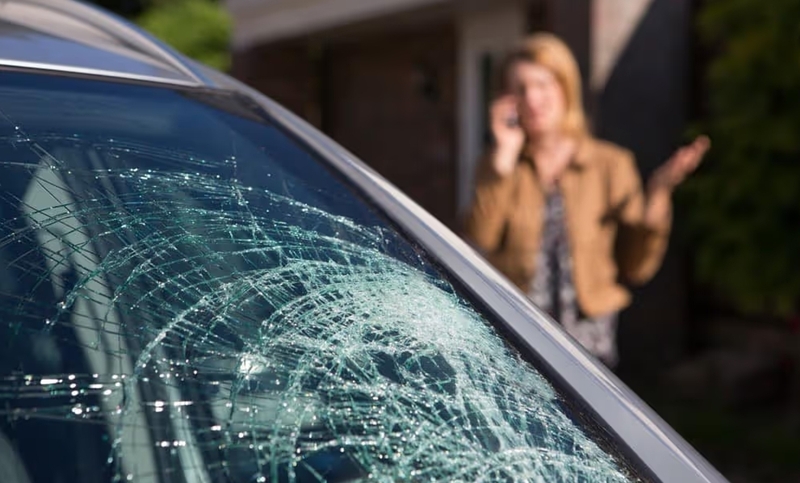
Legal and Insurance Implications
Importance of Windshield Safety Regulations
Most states have laws about windshield safety. Driving with a crack or chip that obstructs your view might get you pulled over. Fines can add up if your windshield is too damaged. You could even get points on your driving record. Lawmakers require clear, unobstructed visibility for safety reasons.
The question “can you drive with a cracked windshield” has legal implications that many drivers don’t consider until it’s too late.
Insurance Coverage and Repair Policies
Insurance companies won’t pay for repairs if the damage is too big or ignored for too long. Usually, fixing a small chip costs less than replacing a whole windshield. But if you delay, the damage might be considered your fault. Early repairs make it easier to get covered. Keeping up with repairs saves money and hassle.
Before asking “can you drive with a cracked windshield,” check your insurance policy to understand coverage limitations and requirements.
Risk of Liability in Accidents
If you’re in a crash and your windshield was chipped or cracked, it could impact who’s at fault. A damaged windshield might be seen as a contributing factor. That could affect your insurance claim or legal situation. To stay safe and protect your rights, keep records of repairs and fix problems fast.
Understanding whether “can you drive with a cracked windshield” legally can help you avoid liability issues and protect your financial interests.
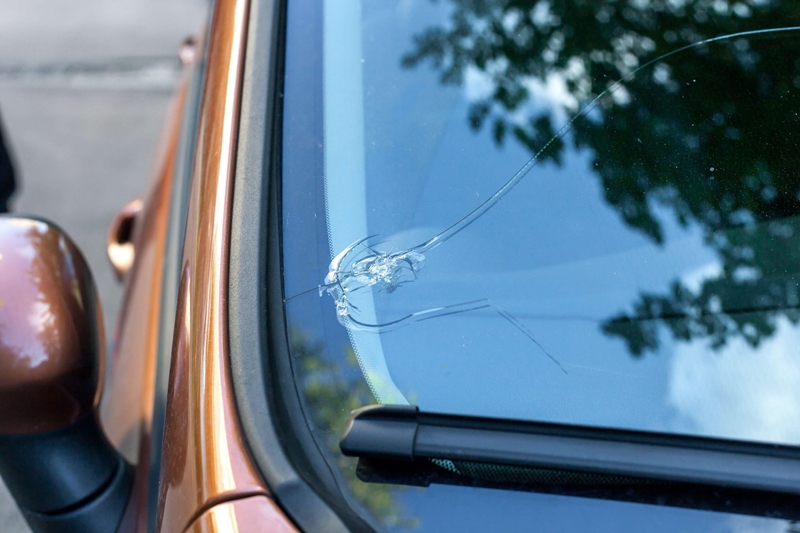
The Dangers to Driver and Passenger Safety
Impaired Visibility and Driver Distraction
Even small chips can block your view. They might look like little spots but can distort your vision. Cracks can blur your line of sight or make it harder to read road signs. When driving, clear vision isn’t optional—and chips can cause accidents.
Many drivers wonder “can you drive with a cracked windshield” without realizing how much even minor damage affects their ability to see clearly.
Increased Likelihood of Injury
A shattered windshield can send glass flying in an accident. This can cause cuts, bruises, or worse. Cases show that unprotected passengers often get hurt when the windshield fails. Prevent this by fixing chips early—your safety depends on it.
Expert Recommendations and Practical Tips
When to Repair or Replace a Chipped Windshield
Getting a chip in your windshield is something most car owners deal with, and figuring out whether to fix or replace it is key to keeping your car safe and sound.
This involves filling the chip with a special resin that’s cured and polished to make it clear again. It’s a budget-friendly way to keep your windshield in good shape.
But, you’ve got to keep an eye on that chip. If it starts spreading or gets close to the edges of the windshield, you might need to replace it. Cracks reaching the edges can weaken the whole thing, making it more likely to shatter if something hits it.
Plus, if the damage is where you look out while driving, it can block your view and increase the chance of an accident. In these cases, getting a new windshield is usually the safest bet. When drivers ask “can you drive with a cracked windshield,” the location and size of the damage determine the answer.
Experts suggest you act fast when you spot a chip or crack. The question “can you drive with a cracked windshield” becomes more urgent as damage spreads over time.
How to Prevent Windshield Damage
Dealing with a damaged windshield can be a real headache for car owners. Not only does it mess with your car’s look, but it can also be pretty dangerous. To keep your windshield in good shape, it’s smart to take some proactive steps.
One of the best things you can do is drive carefully around debris like branches, rocks, or any loose stuff on the road. This is important in construction zones or places where roadwork is happening since there’s a higher chance of running into debris that could hit your windshield.
Prevention is always better than asking “can you drive with a cracked windshield” after damage has already occurred.
Besides watching out for debris, try to steer clear of gravel on dirt roads if you can. Gravel can easily get kicked up by other cars, especially if they’re speeding or driving recklessly. If you have to drive on unpaved roads, slow down and keep a safe distance from other cars to avoid flying stones that might chip or crack your windshield.
Choosing Professional Repair Services
Keeping your car safe and sound means paying attention to your windshield. If it’s cracked or damaged, it can block your view and weaken your car’s structure in a crash. So, it’s important to get professional help for any windshield repairs. Start by finding certified techs who know their stuff and can handle different types of windshield issues. They should have certifications from well-known automotive groups, so you know they’re following the right standards.
When you’re wondering “can you drive with a cracked windshield,” the first step should be consulting qualified professionals who can assess the damage properly.
How to Choose A Repair Professional
Besides certifications, check out the reputation of the repair service. Spend some time reading reviews and testimonials from other customers. This will give you a good idea of what to expect. Look for comments about the techs’ professionalism, how well the repairs hold up, and the overall customer experience. A service with lots of positive reviews is probably a safe bet. Also, don’t be shy about asking friends or family for recommendations; their personal experiences can point you in the right direction.
Before you decide on a repair service, ask about their repair process. Knowing how they assess damage, what materials they use, and the techniques they apply can give you a sense of their expertise. Also, check if they offer any warranties on their work. A good repair service will back their repairs with a warranty covering both parts and labor. This not only gives you peace of mind but also shows they’re confident in what they do.

FAQ: Can You Drive With a Cracked Windshield
-
Can you drive with a cracked windshield legally?
Most states have laws requiring clear, unobstructed windshields. Small chips outside your direct line of sight may be acceptable, but larger cracks, especially those in the driver’s view area, can result in traffic citations, fines, and points on your driving record. Check your local regulations, as requirements vary by state.
-
How long can you safely drive with a cracked windshield?
You shouldn’t drive with a cracked windshield for any extended period. Even small cracks can spread rapidly due to temperature changes, road vibrations, and normal driving stress. What starts as a minor chip can become a safety hazard within hours or days, so immediate repair is always recommended.
-
Will my insurance cover windshield repair or replacement?
Many insurance policies cover windshield repairs with little to no deductible, especially for small chips. However, coverage varies by provider and policy type. Some insurers won’t cover damage if you’ve delayed repair and the crack has spread significantly. Contact your insurance company to understand your specific coverage.
-
What’s the difference in cost between repair and replacement?
Windshield repairs typically cost under $100 for small chips, while full replacements can range from $200 to $500 or more, depending on your vehicle. The key question isn’t just “can you drive with a cracked windshield,” but rather how much you’ll save by addressing damage early through repair instead of waiting for costly replacement.
-
Can a small chip turn into a large crack?
Absolutely. Temperature fluctuations, road vibrations, and even slight impacts can cause small chips to spider into large cracks. This process can happen surprisingly quickly—sometimes within a single drive. That’s why experts recommend immediate repair rather than wondering “can you drive with a cracked windshield” safely.
-
How do I know if my windshield needs repair or replacement?
Generally, chips smaller than a quarter and cracks shorter than six inches can be repaired, provided they’re not in the driver’s direct line of sight. However, damage near windshield edges, multiple impact points, or cracks that obstruct visibility typically require full replacement. Always consult a professional for proper assessment.
-
Is it safe to drive with a cracked windshield in bad weather?
Driving with windshield damage in rain, snow, or extreme temperatures is particularly dangerous. Cracks can obstruct your view of weather conditions, and temperature changes can cause existing damage to spread rapidly. The combination of reduced visibility and structural weakness makes this especially risky.
-
Can I fix a windshield crack myself?
While DIY repair kits exist, they rarely provide lasting solutions and may actually make the problem worse. Professional repairs use specialized tools, high-quality resins, and proper curing techniques that DIY kits can’t match. Instead of asking “can you drive with a cracked windshield” you’ve attempted to fix yourself, invest in professional repair.
-
How long does professional windshield repair take?
Most professional chip repairs take 30-60 minutes, while complete windshield replacement typically requires 1-3 hours. The repair process involves cleaning the damaged area, injecting specialized resin, and curing it with UV light or heat. Professional shops can often complete repairs while you wait.
-
What happens if I ignore windshield damage?
Ignoring windshield damage can lead to several serious consequences: the crack will likely spread and require expensive replacement, your vehicle’s structural integrity becomes compromised in accidents, airbags may not deploy properly, you risk traffic citations and legal liability, and insurance companies may deny coverage for delayed repairs. The question “can you drive with a cracked windshield” has a clear answer when you consider these risks.
Need windshield repair or replacement? Find one on the Mobile Mechanic Directory
What to Do About It
If the chip is smaller than a quarter and not in your line of sight, it can often be repaired. If it’s spreading or near the edge, replacement is the safest choice. Always consult a certified technician.
Preventative Tips
You won’t need to ask can you drive with a cracked windshield if you avoid damage in the first place. Here’s how:
- Keep a safe distance from trucks and cars on gravel or construction roads.
- Avoid sudden temperature changes, like blasting heat on a frozen windshield.
- Clean and inspect your windshield regularly for chips or flaws.
- Fix chips early—resin repairs take less than 30 minutes in most cases.
Final Word: Can You Drive With a Cracked Windshield?
Technically? Sometimes. But safely or legally? Not for long. Don’t wait until a small chip becomes a big problem. Get it inspected, repaired, or replaced—and keep your car safe for everyone inside.


